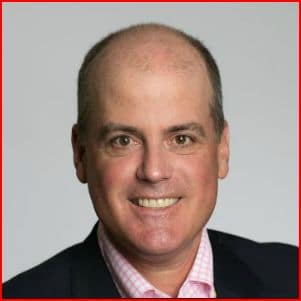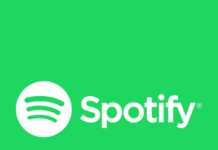
(By Paul Curran) My son turned 18 earlier this year. Putting aside my anxiety on how quickly he is growing up, it occurred to me that for the first and only time in our respective lifetimes, we are now joined together in one of the most coveted demographic groups for advertisers…Adults 18-49.
I pointed out this dynamic to him at his birthday dinner and his reaction fell somewhere between embarrassment and complete disgust. I don’t blame him. What 18-year-old wants to be told they share anything in common musically, politically, or socially with a 49-year-old? And their Dad, no less? To an 18-year-old, anyone over 30 is social security eligible and most definitely “not cool.”
Why, he asked, do companies use such an expansive 18-49 target group to sell their products? My son admittedly has no significant income, has never voted, cannot rent a car in most states, has no credit, has never purchased anything more expensive than a large pizza, doesn’t own a car, and has never met an employee payroll. In his defense, he did just graduate from high school.
Conversely, in my lifetime, since turning 18, I have voted for President eight times, owned multiple cars, purchased a home and the commensurate mortgage, filed taxes, and (sometimes) have disposable income. Remind me again why he and I are grouped together and evaluated in the same manner by advertisers?
Of course, the same dynamic exists with the other target demographic group…Adults 25-54. A 25-year-old rarely has the same lifestyle habits as a 54-year-old. It defies logic that they are considered the same consumer by advertisers. To add insult to injury, the advertising community treats adults 55+, the prime drivers of our economy, as an afterthought, not worthy of any attention whatsoever with their messaging. I understand the idea is to make an impression on future generations but completely ignoring the people with the largest discretionary incomes makes no sense. Throw in the fact that adult lifespans are increasing every year and this failure to recruit to 55+ defies marketing logic.
It’s not just on the buying and selling side where these demographic absurdities reside. For decades, newsrooms across the country have targeted their content offerings based on reaching A18-49 and A25-54 audiences. The success or failure of our news content (and people’s careers) has been based on how these groups engaged with our product via daily overnights and key sweeps periods (side note: Patrick Paolini of WTTG wrote an outstanding piece in May 2017 on the outdated nature of sweep periods).
Ironically, the company issuing the TV and radio ratings data for these overly expansive demographic groups, Nielsen, bases their methodology on the even broader sample of total household universe estimates. While Nielsen aims to empathize with buyers and sellers regarding the erosion of ratings for the key target demos of 18-49 and 25-54, especially in local newscasts, they appear to see nothing askew with their demo formulas so long as the household universe is aligned properly.
Of course, no client has used households to make an advertising buy since the Nixon administration. This dichotomy has left TV and radio stations scrambling to explain to agencies and clients why our mediums are still the most powerful platform on which to place their valuable advertising dollars. It’s becoming an increasingly difficult conversation and is costing the broadcasting industry billions in the process.
As dysfunctional as TV and radio measurement has become, at least we can still confirm to our clients where and when their spots aired each month, certified with a notarized invoice.
Conversely, digital companies today are being pressed by their clients to explain how 1-3 seconds of viewing constitutes a “viewed ad” as well as how their digital creative is showing up alongside, shall we say, some “questionable” environments. Earlier this year, Google and Facebook were forced to issue refunds to their clients for pervasive fraud in their ad campaigns. By the end of 2017, over $6.5 billion will be attributed to digital ad fraud.
What can broadcasters do to reverse the narrative that radio and TV are somehow “old media”?
First, we must continue to hold Nielsen accountable for better measurement across all the platforms that carry our signals, including out-of-home viewing. Nielsen has been too slow to keep up with changing media consumption habits and in the process, nullified our brands as the highest reach linear and digital mediums. Sadly, Nielsen currently impacts our future more than any other entity. That future may look bleak to an outsider despite the evidence to the contrary in the form of historic total viewing/listening of our TV and radio products.
Second, broadcasters should continue to hammer home to our client base and ad agencies the message that our linear and digital platforms have never reached more people and are verifiable to boot. The TVB and RAB will play a critical role in this effort.
Finally, the buying community, especially major ad agencies, should expand the data pools from which they purchase media. Relying solely on linear ratings makes no sense given that people continue to consume our platforms radically differently than they did just two years ago. As an example here in Orlando, ad agencies are shortchanging their clients by limiting their reach and frequency to the sample sizes of just 800 households of linear TV viewers.
While I will enjoy the sentimental bond I share with my 18-year-old son for the next few months, we agree it’s not reality. The sooner he and I are evaluated in a completely different light by Nielsen and the advertising agencies throughout the U.S., the better it will be for our valued clients. For now however, I’m off to take him to dinner. He probably wants Taco Bell takeout while I prefer dining in at a nice steakhouse. Aren’t we supposed to have the same tastes?
Paul Curran is the Market Vice President for Cox Media Group Orlando consisting of WFTV TV (ABC), WRDQ TV (Ind), News 96.5 WDBO, K92.3, Star 94.5, Power 95.3, WMMO 98.9, ESPN 580, 107.3 Solo Exitos and Cox Events. He can be reached at [email protected]








… and only an unusual person spends 2 years actively participating in a people meter sample, so we end up measuring the viewing/listening habits of unusual people.
Agreed but ad agencies go the easy route they are unwise and ego driven and they will not change
It is especially absurd that listeners 55+ are being ignored, since they are the largest group actually LISTENING to the radio.
Statistically that’s not true. Especially in PPM markets.
if we are not listening its because theres nothing to listen to
Paul, I’ve been in Radio over 50 years, still work 2 days a week at 83. Been
in sales and management all these years after starting out on the air.
Maybe your article will open some eyes.
I enjoyed reading this article because I feel the same way on so many points.
Nielsen does have such a firm hold of our business. The only way to keep Nielsen accountable, in my opinion, Are for more rating and research companies to come in to the market. I would love to be the only radio station in my market. Think of all the stories I could tell potential advertisers.
Nielsen needs some competition to show that there systems are flawed. Remember the Volitair???? Followed up with the enhanced CBET update Nielsen so kindly did for us.
Or maybe we just all stop subscribing?
Yeah right…….fat chance!
Point 2.
Isn’t the only reason why agencies use 18 to 49 is to whittle us down and grind the rate down. And as long as radio groups with no rate integrity continue to drop trousers, it really doesn’t matter what the demo is. But I guess that would be another article with the title of something like “bad management, we take what we can get”.
LOOK I’m all game for Nielsen accountability and educating agencies on narrowing demos. I will be the first one to sign up on the sign-up sheet, just let me know how to begin.
ABC………( if you want the knife set)
Great article. For radio ratings, its derived from a total of 700 meters in Orlando; hardly representative. Definitely, more granular market research would benefit programming and advertisers. But, since Nielsen was allowed to become a monopoly there are no dynamics to intensify their efforts and hold them more accountable.
Maybe Paul might consider:
Target Market – anyone with a pulse and a pay check or access to resources – depending on products or services being advertised.
Ratings as currently prepared and presented – expensive, suspicious, worthless and unnecessary exercises.
Alternate ideals – better on-air communications and more influential local creative.
An acceptance that: Massive improvement of Client ROI is what the whole radio project is about.